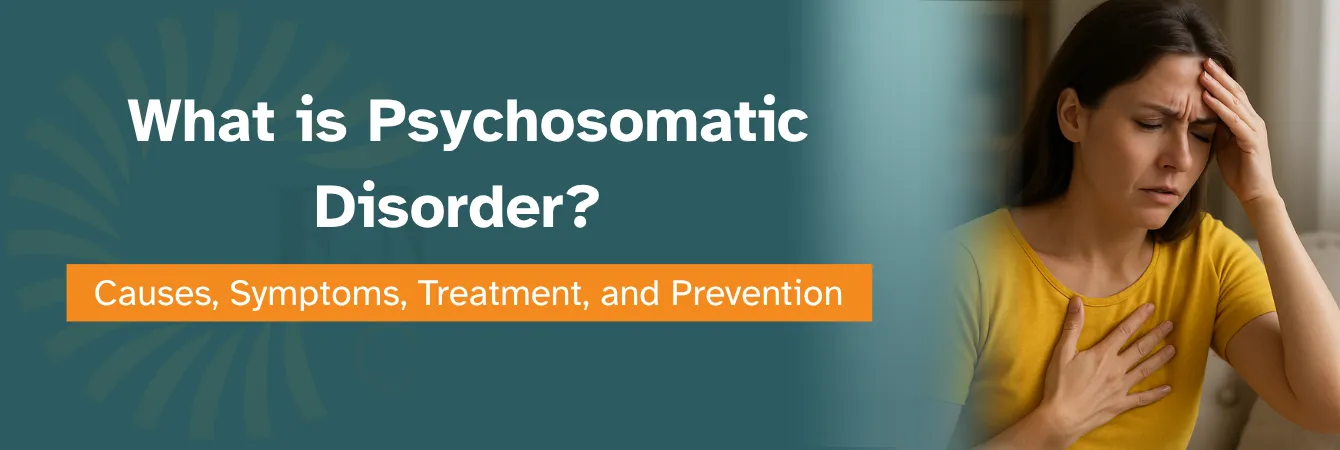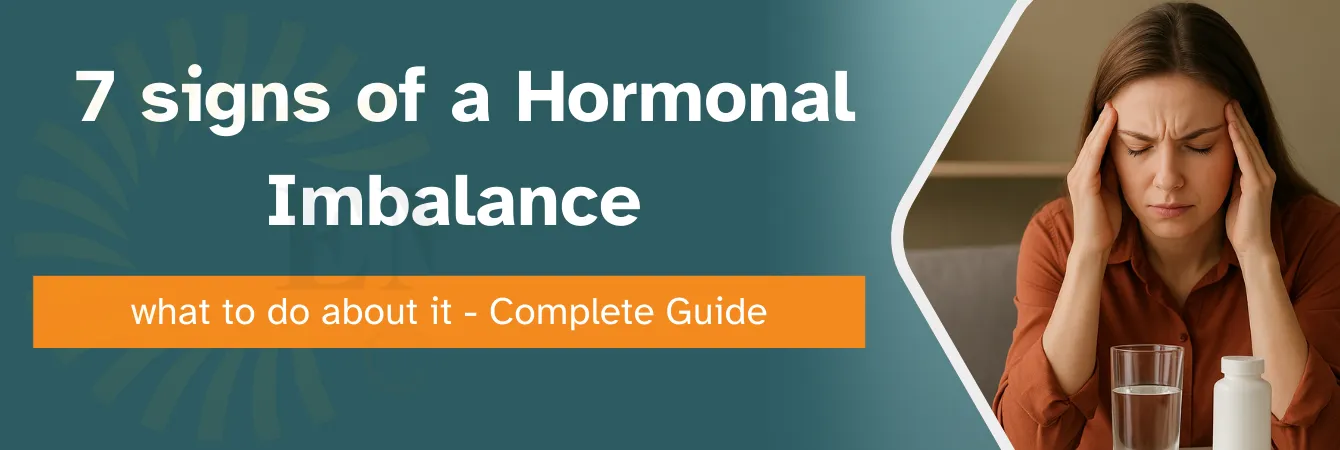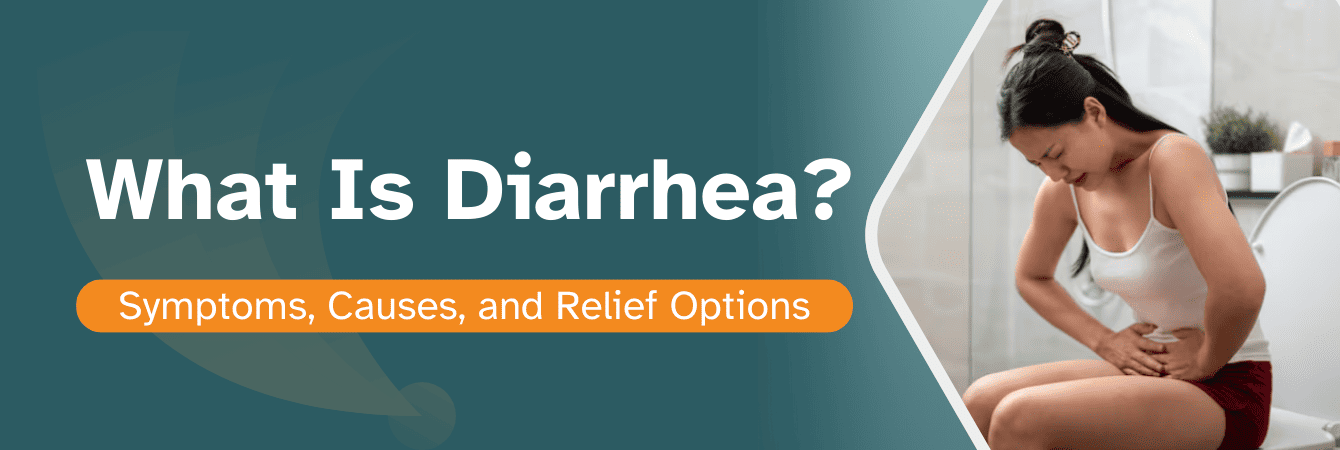What is Psychosomatic Disorder? - Causes, Symptoms, Treatment, and Prevention
- August 1, 2025
- Abrol Hospital
Psychosomatic Disorder refers to a condition in which psychological or emotional factors affect your physical health. The human body and mind are not separate entities—they’re deeply interconnected. Think about the last time you were nervous. Did your heart race? Did your palms sweat? That’s your brain affecting your body. In a psychosomatic disorder, this mind-body dialogue is amplified. Emotional stress or unresolved trauma leads to physical manifestations, turning emotional suffering into bodily symptoms. Understanding this connection is vital to healing both mentally and physically.
Causes of Psychosomatic Disorder
1. Psychological Stress
One of the most common triggers of psychosomatic symptoms is stress. When a person experiences ongoing emotional or mental stress, the body remains in a constant state of “fight or flight,” releasing cortisol and adrenaline. Over time, this state of hyper-alertness taxes the nervous system and weakens the immune response. The end result? Chronic headaches, chest pain, gastrointestinal distress, and a host of other unexplained symptoms that don’t improve with conventional treatments.
2. Childhood Trauma or Abuse
Trauma in early life—such as neglect, emotional abuse, or witnessing domestic violence—can set the stage for psychosomatic disorders in adulthood. Children may not have the tools or vocabulary to express emotional pain, so they internalize it. This buried distress can later resurface as physical symptoms. The body becomes a canvas for unspoken feelings, and the unresolved trauma begins to “speak” through pain, fatigue, or recurring illness.
3. Anxiety and Depression
Mental health conditions like anxiety and depression are strongly linked to psychosomatic symptoms. People suffering from these disorders often experience a heightened awareness of bodily sensations. A simple stomach ache may be perceived as intense or dangerous, further fueling anxiety. Additionally, depression can alter how pain is experienced, often intensifying discomfort or creating fatigue and weakness that have no biological cause.
4. Personality Traits and Coping Mechanisms
Certain personality types are more prone to developing psychosomatic symptoms. For example, perfectionists, people pleasers, or those who internalize emotions tend to suppress their feelings rather than express them. This emotional bottling eventually finds release in physical form. A person may develop chronic migraines or muscle tension as a result of their inability to manage emotional stress effectively.
5. Neurological Factors
Neurotransmitters like serotonin, dopamine, and norepinephrine play critical roles in regulating mood, emotion, and perception of pain. When there’s an imbalance in these chemicals—due to genetics, lifestyle, or trauma—it can disrupt the communication between the brain and the body. This disruption may lead to increased sensitivity to pain or unexplained physical sensations, contributing to the cycle of psychosomatic illness.
Common Symptoms of Psychosomatic Disorder
Physical Symptoms with No Clear Medical Cause
These are often the hallmark of psychosomatic disorders. A patient may complain of chronic stomach pain, heart palpitations, or joint pain, but medical tests show no abnormalities. This disconnect between symptoms and diagnosis can be frustrating for both the patient and the doctor. Yet, the pain and discomfort are very real and can significantly impact daily life.
Pain, Fatigue, and GI Issues
Common physical manifestations include tension headaches, lower back pain, and ongoing fatigue that doesn’t improve with rest. Many also suffer from digestive issues like bloating, constipation, or irritable bowel syndrome (IBS). These symptoms tend to flare up during periods of emotional stress or anxiety, making it difficult to maintain normal routines.
Cardiovascular and Respiratory Symptoms
Patients may experience racing heartbeats, tightness in the chest, shortness of breath, or even dizziness. These symptoms often mimic more serious conditions like heart disease or asthma, but no physiological cause is found upon examination. The emotional distress fuels the physical sensations, creating a loop of fear and worsening symptoms.
Skin and Musculoskeletal Complaints
Rashes, eczema, psoriasis, or joint stiffness may appear or worsen during emotional turmoil. These skin or musculoskeletal issues can be psychosomatic in nature, driven by internal stress that finds expression through external symptoms.
Emotional and Behavioral Patterns
Beyond the physical complaints, individuals often display signs of irritability, mood swings, withdrawal, or compulsive behaviors. They may be hyper-focused on their health, constantly visiting doctors or fearing the worst-case scenario. This psychological pattern reinforces the physical symptoms, creating a cycle that’s hard to break.
Treatment Options for Psychosomatic Disorder
Cognitive Behavioral Therapy (CBT)
Cognitive Behavioral Therapy is one of the most effective treatments for psychosomatic disorders. It focuses on identifying and altering the negative thought patterns and beliefs that fuel stress and, consequently, physical symptoms. A person might, for example, believe that a minor stomach ache signals a serious disease. CBT helps reframe that thought into a more rational one. Over time, this reshaping of perception reduces anxiety and breaks the cycle of mind-induced physical pain. CBT also teaches coping strategies, relaxation techniques, and problem-solving skills to manage daily stressors better.
Medication (Antidepressants & Anxiolytics)
While therapy remains the cornerstone of treatment, medications can provide crucial support. Antidepressants like SSRIs (Selective Serotonin Reuptake Inhibitors) can help regulate mood and reduce the intensity of both emotional and physical symptoms. Anxiolytics, used under medical supervision, can ease acute episodes of anxiety or panic attacks that may contribute to physical distress. Medication is particularly useful for patients who have co-occurring conditions like major depressive disorder or generalized anxiety disorder alongside psychosomatic symptoms.
Stress Management Techniques
Teaching the body how to relax is just as important as treating the mind. Stress management strategies like guided imagery, deep breathing exercises, progressive muscle relaxation, and aromatherapy can ease physical tension. These techniques activate the body’s relaxation response, reducing heart rate, lowering blood pressure, and calming overactive nerve signals that may be misinterpreted as physical pain or illness.
Mindfulness and Meditation
Mindfulness and meditation train the brain to stay present rather than ruminate over the past or worry about the future. Daily mindfulness practice helps individuals develop awareness of their physical sensations without reacting with fear or anxiety. Over time, this leads to a decrease in symptom severity. Practices like body scan meditation or mindful breathing have shown impressive results in reducing psychosomatic symptoms and promoting emotional balance.
Lifestyle Changes and Support Groups
Daily habits have a direct impact on mental and physical health. A nutrient-rich diet, regular physical activity, consistent sleep, and hydration can significantly reduce symptom flare-ups. Additionally, joining a support group allows individuals to share experiences, exchange coping strategies, and feel less isolated. Peer support can provide encouragement and practical advice, fostering a sense of hope and community.
Prevention and Self-Care
Building Emotional Resilience
Emotional resilience is the psychological strength to cope with stress, adversity, and trauma. It’s like a muscle—it strengthens with regular use. Building resilience through journaling, therapy, or developing positive affirmations can help individuals respond to emotional challenges without internalizing them physically. Resilient individuals are better equipped to process emotions in healthy ways, reducing the risk of developing psychosomatic symptoms.
Early Intervention for Mental Health
Recognizing and addressing emotional issues before they spiral is critical. The earlier someone seeks support for anxiety, depression, or emotional overwhelm, the less likely it is that those feelings will convert into physical symptoms. Preventive mental health care, such as routine counseling or mental health check-ins, can catch early signs of distress and guide individuals toward healthier emotional regulation.
Creating a Balanced Life
Balance means different things for different people, but the core idea is simple: give time and energy to all aspects of life—work, relationships, rest, and self-care. Overworking or neglecting emotional needs can lead to burnout, which often triggers or worsens psychosomatic conditions. Creating time for hobbies, breaks, fun, and emotional expression is essential to both mental and physical wellbeing.
Importance of Social Support
Loneliness and isolation are significant risk factors for psychosomatic symptoms. Having close relationships provides a safety net during tough times. Talking to someone about your feelings—whether a friend, partner, or therapist—prevents emotions from bottling up. Social interaction also releases oxytocin, a hormone that lowers stress and promotes healing.
Educating About Mental Health Stigma
Many people suffer in silence because they fear being judged or misunderstood. Educating society about the legitimacy of psychosomatic disorders can reduce stigma and encourage more individuals to seek help. When psychosomatic illness is viewed through a compassionate, informed lens, it becomes easier for patients to access care without shame or guilt.
🩺 Talk to Our Expert Doctor About Your Symptoms Today
Are you constantly battling unexplained aches, chronic fatigue, or digestive issues—yet every medical test comes back normal? You’re not imagining it. Your body could be expressing what your mind is trying to hide. Psychosomatic disorders are real, treatable, and often misunderstood.
📞 Book a consultation with our expert doctor today and take the first step toward healing—both mentally and physically.

FAQs About Kidney Stones Symptoms
A common example of a psychosomatic illness is Irritable Bowel Syndrome (IBS), where people experience bloating, cramps, and diarrhea or constipation, often triggered or worsened by emotional stress. Other examples include tension headaches, chronic fatigue, and even high blood pressure. These conditions may have no detectable physical cause, but they’re directly influenced by mental or emotional distress.
While the list can vary, seven frequently recognized psychosomatic disorders include:
Tension headaches
Irritable Bowel Syndrome (IBS)
Hypertension (High blood pressure)
Peptic ulcers
Chronic fatigue syndrome
Psoriasis and eczema
Asthma
These illnesses are often worsened or triggered by chronic stress, anxiety, or unresolved emotional issues, showing how strongly the mind and body are connected.
Psychosomatic pain refers to physical pain that’s influenced by emotional or psychological factors rather than injury or illness. For example, you might feel neck stiffness, chest tightness, or back pain without a clear physical cause. This kind of pain is real—your body is reacting to emotional stress signals, not making it up.
Treatment for psychosomatic disorders typically involves a combination of mental and physical health strategies, such as:
Cognitive Behavioral Therapy (CBT) to change stress-related thought patterns
Stress reduction techniques like deep breathing or meditation
Medications for anxiety or depression, if necessary
Lifestyle changes like better sleep, exercise, and diet
Treating both the emotional stress and physical symptoms together is key to long-term recovery.



